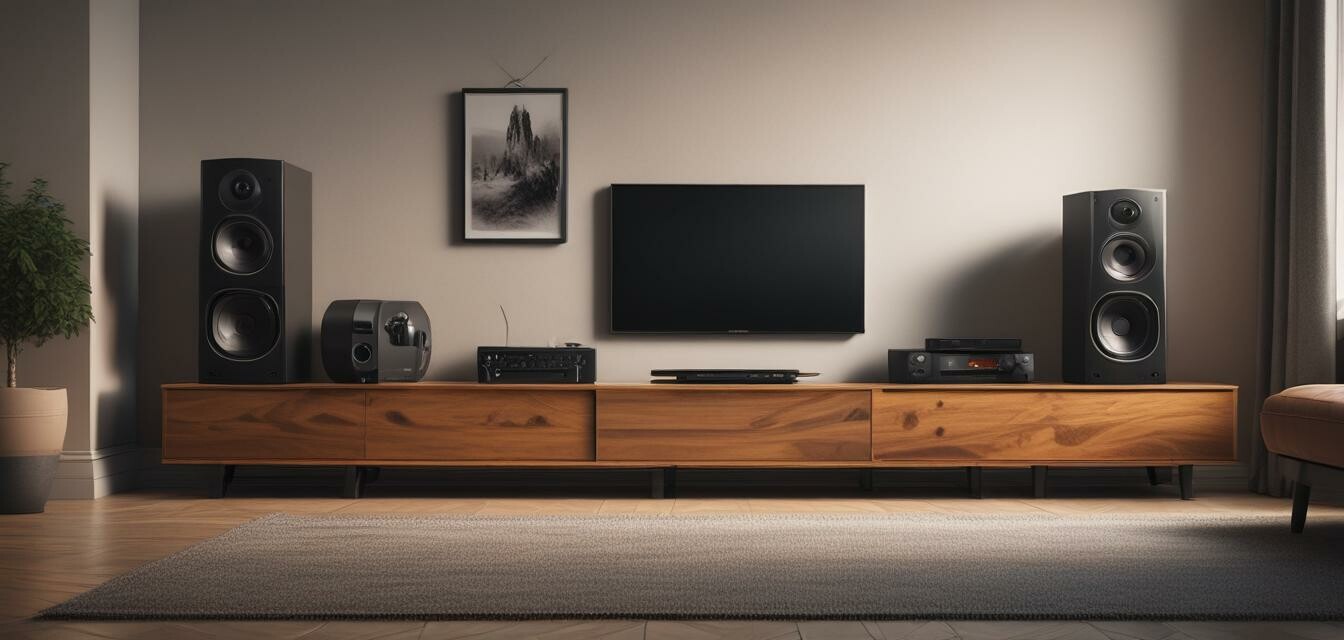
The shift towards customizable audio experiences
Key takeaways
- The demand for customizable audio systems is on the rise as consumers seek personalized sound experiences.
- Technological advancements are making it easier for users to tailor audio settings to their preferences.
- Various brands are responding by offering modular and adaptable audio equipment.
- The future of audio systems may include greater integration with smart home technologies.
- Consumer education will be crucial in maximizing the benefits of customizable audio technologies.
As we move into 2025, the world of audio experiences is undergoing a significant transformation. Consumer preferences are steering the audio market towards more customizable audio systems that allow users to fine-tune their listening experiences like never before. This shift not only enhances the enjoyment of music and other audio content but also represents a pivotal change in how brands approach product development.
The changing landscape of audio systems
Traditionally, audio systems were designed as static packages that offered a one-size-fits-all solution. However, consumers today are looking for tailored options. This demand for personalization is reflected in various industry trends:
- More brands are offering customizable home audio systems.
- Consumers value systems that adapt to their listening environment.
- Technological advancements are enabling more intuitive control mechanisms for audio settings.
What drives consumer demand for customizable audio?
Several factors contribute to the increasing consumer demand for customizable audio experiences:
| Factor | Description |
|---|---|
| Personalization | Consumers want systems that reflect their unique tastes and preferences. |
| Flexibility | Users prefer systems that can be adapted as their needs evolve over time. |
| Technological Integration | Integration with smart home devices allows for seamless audio experience customization. |
| Increased Awareness | The rise of audiophiles has led to greater consumer education about audio quality. |
Consumer preferences shaping product designs
As consumers express their desire for audio customization, brands are taking note. They are developing products that are not only modular in nature but also intuitive. Some popular trends include:
- Modular Speaker Systems: Consumers are seeking systems that can be expanded or altered according to their specific needs.
- Smart Audio Controls: Deviced featuring apps for easy access to customization options.
- High-Fidelity Sound Solutions: Increased interest in superior sound quality has prompted brands to innovate.
The role of technology in audio customization
Technology plays a key role in this shift, providing the means to achieve tailored sound experiences. Some notable advancements include:
- AI Sound Optimization: Artificial intelligence can analyze a room's acoustics and automatically adjust settings.
- Wireless Connectivity: Bluetooth and Wi-Fi enable easy connections to mobile devices and streaming services.
- Virtual Reality Integration: As virtual reality becomes more mainstream, audio customization will also adapt to these environments.
Looking ahead: the future of customizable audio
The evolution of customizable audio systems is set to continue into the next decade. As more consumers prioritize personalization, brands must remain agile and innovative. Future trends may include:
| Future Trend | Description |
|---|---|
| Smart Home Integration | Greater synergy between audio equipment and smart home devices. |
| Eco-Friendly Solutions | Brands adopting sustainable materials and processes for products. |
| Immersive Experiences | Developments in 3D audio and spatial sound technologies. |
| Community Feedback | Companies leveraging consumer feedback for continuous improvement. |
Key players in the customizable audio market
Several manufacturers are leading the charge in customizable audio solutions. By exploring their products, you can identify options that best suit your needs:
- Bluetooth Speakers offer portability and flexibility with sound customization.
- Home Theater Systems bring cinema-like experiences to personal spaces.
- Soundbars provide a streamlined audio experience, perfect for modern living rooms.
Consumer education: maximizing audio customization benefits
As the market expands, consumer education will play a vital role in helping users fully leverage customizable audio solutions. Knowledge about how to manipulate sound settings and enhance audio quality is essential. Manufacturers and brands should offer resources, tutorials, and customer support to ensure that users can adapt their audio systems according to their individual preferences.
Conclusion
The shift towards customizable audio experiences is one of the most significant trends in the audio industry as we approach 2025. Consumer demand drives innovation and product development, making personalized sound solutions more accessible than ever. As technology advances, the possibilities for customization will only expand, creating immersive and enjoyable experiences for audio enthusiasts worldwide.
Tips for getting started with customizable audio
- Explore different brands to find systems that resonate with your listening style.
- Take advantage of technology; use apps that assist in configuring audio settings.
- Stay informed about the latest developments in sound technology for optimal choices.
Pros
- Personalization enhances listening experiences.
- Ability to adapt audio systems over time.
- Innovative technology offers greater control over sound settings.
Cons
- Customization options can be overwhelming for beginners.
- Higher initial investment compared to standard audio systems.
- Requires time and effort to fully understand and utilize features.